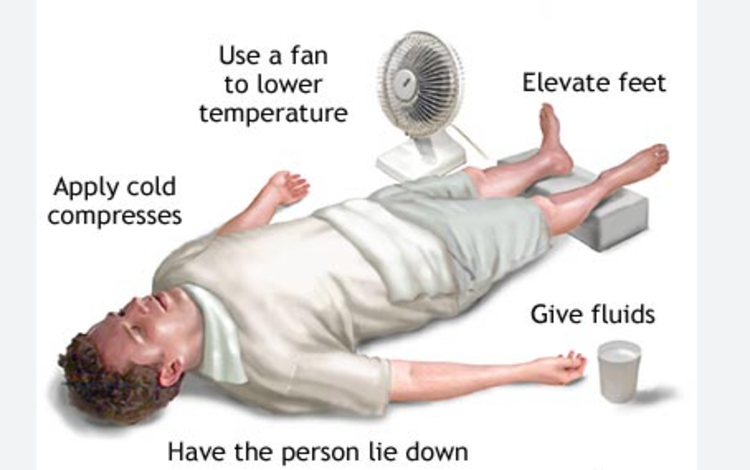As temperatures soar, so does the risk of heat-related illnesses like heat stroke. Heat stroke is a serious condition that occurs when the body overheats, often due to prolonged exposure to high temperatures. However, with the right precautions, you can safeguard yourself and your loved ones from the dangers of heat stroke. Here are some essential tips to keep you cool and protected during hot weather.

- Stay Hydrated: One of the most crucial steps in preventing heat stroke is staying hydrated. Drink plenty of water throughout the day, even if you don’t feel thirsty. Avoid excessive consumption of caffeinated or alcoholic beverages, as they can contribute to dehydration. Electrolyte-rich drinks can also help replenish lost minerals due to sweating.
- Dress Appropriately: Choose lightweight, loose-fitting clothing in light colors that reflect sunlight rather than absorb it. Opt for breathable fabrics such as cotton or linen, which allow air to circulate your body and help sweat evaporate, cooling you down in the process. Wearing a wide-brimmed hat and sunglasses can also provide shade and protect your face and eyes from the sun’s harmful rays.
- Limit Outdoor Activities: During the hottest parts of the day, typically from late morning to early evening, limit your time spent outdoors, especially if engaging in strenuous activities. If possible, schedule outdoor tasks or exercise for the cooler hours of the morning or evening. Take frequent breaks in the shade or indoors to rest and cool off.
- Seek Shelter: When indoors, ensure your environment is properly ventilated and cooled. Use fans or air conditioning to circulate air and maintain a comfortable temperature. If you don’t have access to air conditioning at home, consider visiting public places such as malls, libraries, or community centers that offer cool spaces during heatwaves.
- Know the Signs: Familiarize yourself with the symptoms of heat stroke, which can include high body temperature, rapid heartbeat, headache, dizziness, nausea, confusion, and unconsciousness. If you or someone else exhibits these signs, it’s essential to act quickly. Move to a cooler area, hydrate, and seek medical attention immediately, as heat stroke can be life-threatening if left untreated.
- Protect Vulnerable Populations: Certain groups, such as the elderly, young children, pregnant women, and individuals with chronic medical conditions, are more susceptible to heat-related illnesses. Take extra precautions to ensure their safety during hot weather, such as checking on them regularly, providing access to cool environments, and assisting with hydration as needed.
- Acclimate Gradually: If you’re planning to engage in outdoor activities or travel to a hot climate, give your body time to adjust to the heat gradually. Start with shorter exposure periods and gradually increase the duration over several days. This allows your body to acclimate and reduces the risk of heat-related illnesses.
Heat stroke is a serious condition that can have severe consequences, but by following these simple yet effective tips, you can significantly reduce your risk. Remember to stay hydrated, dress appropriately, limit outdoor activities during peak heat hours, seek shelter in cool environments, recognize the signs of heat stroke, protect vulnerable populations, and acclimate gradually to hot weather conditions. By taking proactive measures, you can enjoy the summer months safely and comfortably.
